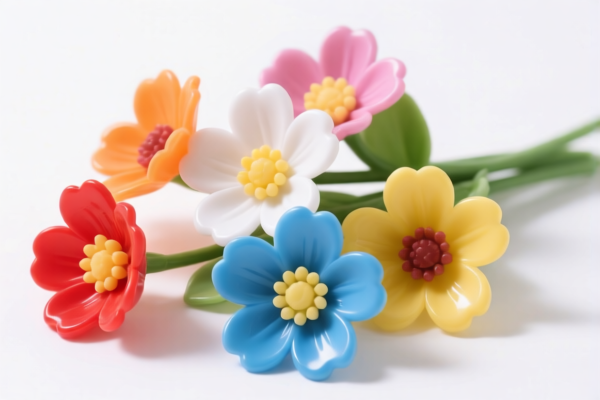| HS Code | Official Doc | Tariff Rate | Origin | Destination | Effective Date |
|---|---|---|---|---|---|
| 4823901000 | Doc | 55.0% | CN | US | 2025-05-12 |
| 4823902000 | Doc | 55.0% | CN | US | 2025-05-12 |
| 4811902000 | Doc | 55.0% | CN | US | 2025-05-12 |
| 4811908020 | Doc | 55.0% | CN | US | 2025-05-12 |
| 3926400010 | Doc | 35.3% | CN | US | 2025-05-12 |
| 3921905010 | Doc | 34.8% | CN | US | 2025-05-12 |
| 3921904010 | Doc | 34.2% | CN | US | 2025-05-12 |




法语
Faux Decoration
Definition: Faux decoration (pronounced “foh dek-oh-rah-see-ohn”) translates to “false decoration” in English. It refers to decorative painting techniques used to imitate the appearance of more expensive materials and finishes, such as marble, wood grain, stone, and textiles. The practice aims to create a luxurious or elaborate aesthetic at a lower cost.
Materials:
- Paint: Acrylic, oil, or latex paints are commonly used, often with specialized mediums to alter texture and drying times.
- Glazes: Transparent or semi-transparent layers of paint applied over a base coat to create depth and variation in color.
- Mediums: Additives used to modify paint properties – thickening agents, extenders, retarders, etc.
- Tools: A variety of tools are employed, including brushes (various sizes and shapes), sponges, rags, combs, styluses, and specialized combs and rollers.
- Sealers/Varnishes: Protective coatings applied to finish and protect the decoration.
Purpose:
- Cost-Effectiveness: To replicate expensive finishes without the associated high costs of genuine materials.
- Aesthetic Enhancement: To add visual interest, sophistication, and character to interior spaces.
- Customization: Allows for unique and personalized designs tailored to specific preferences and styles.
- Repair and Restoration: Used to conceal imperfections or restore damaged surfaces.
Function:
The function of faux decoration is primarily visual. It does not alter the structural properties of a surface but creates the illusion of a different material or texture. The techniques rely on manipulating paint and other materials to simulate the appearance of depth, pattern, and realism.
Usage Scenarios:
- Interior Walls: Creating marble effects, wood paneling illusions, or textured finishes.
- Furniture: Decorative painting on cabinets, tables, chairs, and other furniture pieces.
- Ceilings: Simulating coffered ceilings, ornate plasterwork, or sky effects.
- Architectural Elements: Enhancing moldings, columns, and other architectural details.
- Props and Stage Design: Creating realistic backdrops and scenery for theater, film, and events.
Common Types:
- Marbling (faux marbre): Imitating the veining and patterns of marble stone.
- Wood Graining (faux bois): Replicating the appearance of various wood species.
- Stone Finishes: Simulating the texture and color of natural stone like granite, limestone, or brick.
- Rag Rolling: Creating a textured effect by rolling a paint-soaked rag across the surface.
- Sponging: Applying paint with a sponge to create a mottled or textured finish.
- Strie: Creating vertical brushstrokes to simulate fabric or wood grain.
- Antiquing: Creating a distressed or aged appearance.
- Trompe-l'oeil: “Deceive the eye” – creating highly realistic illusions of three-dimensional objects or scenes.
- Venetian Plaster: Creating a smooth, polished, marble-like finish with layered plaster and wax.
Les décorations artificielles peuvent être classées selon leur composition et leur utilisation. Voici une analyse basée sur les informations disponibles :
-
4823901000 : Ce code correspond à d'autres papiers, cartons, pâtes de cellulose et voiles de fibres de cellulose, coupés à des dimensions ou des formes spécifiques ; autres articles de pâte de cellulose, de papier, de carton, de pâtes de cellulose ou de voiles de fibres de cellulose : Autres : En pâte de cellulose. Ce code pourrait s'appliquer si la décoration est fabriquée à partir de pâte de cellulose. La base d'imposition est de 0,0 %, les droits supplémentaires sont de 25,0 %, et les droits supplémentaires seront de 30 % après le 2 avril 2025. Le taux d'imposition total est de 55,0 %.
-
4823902000 : Ce code correspond à d'autres papiers, cartons, pâtes de cellulose et voiles de fibres de cellulose, coupés à des dimensions ou des formes spécifiques ; autres articles de pâte de cellulose, de papier, de carton, de pâtes de cellulose ou de voiles de fibres de cellulose : Autres : En papier mâché. Ce code pourrait s'appliquer si la décoration est fabriquée en papier mâché. La base d'imposition est de 0,0 %, les droits supplémentaires sont de 25,0 %, et les droits supplémentaires seront de 30 % après le 2 avril 2025. Le taux d'imposition total est de 55,0 %.
-
3926400010 : Ce code correspond à d'autres articles en matières plastiques et articles en autres matières des postes 3901 à 3914 : Statuettes et autres articles ornementaux, arcs et produits similaires à des fins décoratives, y compris les emballages cadeaux et similaires. Ce code pourrait s'appliquer si la décoration est fabriquée en matières plastiques et est utilisée à des fins décoratives ou d'emballage cadeau. La base d'imposition est de 5,3 %, les droits supplémentaires sont de 0,0 %, et les droits supplémentaires seront de 30 % après le 2 avril 2025. Le taux d'imposition total est de 35,3 %.
Il est important de noter que la classification correcte dépendra de la composition exacte de la décoration artificielle. Si la décoration est fabriquée à partir de papier ou de carton, les codes 4823901000 ou 4823902000 pourraient être appropriés. Si elle est fabriquée en matières plastiques, le code 3926400010 pourrait être plus approprié.
Customer Reviews
No reviews yet.